Badges and Flags of British Regiments
Set from 1903
 4th Dragoon Guards, Irish Guards, Scots Guards, 2nd Dragoon Guards, Northumberland Fusiliers and Royal Horse Guards.
4th Dragoon Guards, Irish Guards, Scots Guards, 2nd Dragoon Guards, Northumberland Fusiliers and Royal Horse Guards.


Northumberland Fusiliers (1903), Welsh Regiment (1904) and 1st Bn Gloucestershire Regiment (1930) issued by John Player and Sons.
Colours of the Irish Guards and the Highlanders
 These colours are the Union with a Company badge in the centre ensigned with The Crown and are used when the battalion is mounting Queen's Guard. All 22 Company badges are borne in rotation. The Badge shown on the Colours above is a Second Battalion Colour called The Crest of Ireland.
These colours are the Union with a Company badge in the centre ensigned with The Crown and are used when the battalion is mounting Queen's Guard. All 22 Company badges are borne in rotation. The Badge shown on the Colours above is a Second Battalion Colour called The Crest of Ireland.
The following two Colours are being sold on eBay by blackash6 for lb575 ($890)
Irish Guards Regimental Colours



 The Regimental Colours From the 1st Battalion Irish Guards. Before every set of colours is accepted by the MOD, 2 proofs are made of each colour (except Queens Colour, Guards only. Within line regiments, the colours are reversed and the crimson standard is the Regimental Colour, and the old Union Flag is the Queens Colour). What we have here is the second proof (1st one has already been sold) that we have managed to source from the official MOD supplier. The only difference between this one and the colours presented to the Battalion is the type of material used. The proofs are made from cotton, linen mix were as the final production will be made from silk. Each set of Colours are painstakingly hand embroidered to ensure a perfect result. This example measures 47 inches by 36 inches, edged with gold and maroon tassel trim and complete with official Regimental tassels.
The Regimental Colours From the 1st Battalion Irish Guards. Before every set of colours is accepted by the MOD, 2 proofs are made of each colour (except Queens Colour, Guards only. Within line regiments, the colours are reversed and the crimson standard is the Regimental Colour, and the old Union Flag is the Queens Colour). What we have here is the second proof (1st one has already been sold) that we have managed to source from the official MOD supplier. The only difference between this one and the colours presented to the Battalion is the type of material used. The proofs are made from cotton, linen mix were as the final production will be made from silk. Each set of Colours are painstakingly hand embroidered to ensure a perfect result. This example measures 47 inches by 36 inches, edged with gold and maroon tassel trim and complete with official Regimental tassels.
Irish Guards Regimental Colours
This particular Colour is the newest design and was presented to the Regiment in May last years by HM Queen Elizabeth II . The regiment then Trooped this Colour in last years Trooping The Colour ceremony in London. as the Roman numerals depict a 1 which would indicate that this was a 1st Battalion standard (1 Company). The newest battle honours gained in Iraq in 2003 have also been added. The design in the centre will change to depict that of the different companies within the regiment every time new Colours are presented to the Regiment. This is a duty normally preformed by the reigning Monarch of the period and will involve the entire regiment being on parade.
Scots Guards Regimental Colour

Duplicate Regimental Colour held by the Scots Guards. Made from pure silk and hand embroidered with the most expensive coloured yarn, this Colour has taken nearly 5 months to produce. Edged with regimental tasseled trim and official Guards lanyard tassel.
17th Regiment of Foot
 The 17th (Leicestershire) regiment was formed in 1688 by colonel Solomon Richards and honoured itself at Namur 1695, during the American War of Independence, the West Indies during the Napoleonic Wars, and in India for twenty years from 1804 during which time its numerous battle honours gained it the Royal Tiger cap badge and 'The Tigers' nickname. Painting by Jim Lancia
The 17th (Leicestershire) regiment was formed in 1688 by colonel Solomon Richards and honoured itself at Namur 1695, during the American War of Independence, the West Indies during the Napoleonic Wars, and in India for twenty years from 1804 during which time its numerous battle honours gained it the Royal Tiger cap badge and 'The Tigers' nickname. Painting by Jim Lancia
28th (North Gloucestershire) Regiment of Foot
 The Essex Regiment was an infantry regiment of the British Army that saw active service from 1881 to 1958.
The Essex Regiment was an infantry regiment of the British Army that saw active service from 1881 to 1958.
The Royal Welch Fusiliers: King's and Regimental Colours
 Each flagpole is ten feet long, tipped at the bottom with a small brass cap and at the top with a brass fenial in the shape of a spear head (the four quadrants being cut away) and tied with long gold (laced with maroon) cords ending in matching tassels.
Each flagpole is ten feet long, tipped at the bottom with a small brass cap and at the top with a brass fenial in the shape of a spear head (the four quadrants being cut away) and tied with long gold (laced with maroon) cords ending in matching tassels.
The King's Colour is a silk Union Jack measuring six feet high and six feet, six inches in length. In the centre of which is the Prince of Wales' "coronet-and-three-feathers" device. The Roman numeral "XXIII" in gold is in the upper quadrant closest to the pole on both sides. The King's Colour is the senior of the two and should always be displayed as the right of the two. Neither Colour should be displayed alone.
The Regimental Colour is a blue silk flag of the same colour as the Regiment's facings with the following devices on it:
in the top corner, nearest the pole, the Union Jack with the Roman numerals XXIII in gold centred in the bottom corner, nearest the pole, the Red Dragon in a blue circle in the top corner, farthest from the pole, the Rising Sun device In the bottom corner, furthest from the pole, the "coronet-and-three-feathers" device of the Prince of Wales in a red circle. In the centre, the Prince of Wales' "coronet-and-three-feathers" device with the motto "Ich Dien" (I serve).
http://www.rwfia.org/theColours.htm
 The Queen's colour contains 42 combined Battle honours awarded to the Gloucestershire, Royal Berkshire and Wiltshire Regiments in the Great War and the Second World War.
The Queen's colour contains 42 combined Battle honours awarded to the Gloucestershire, Royal Berkshire and Wiltshire Regiments in the Great War and the Second World War.
http://history.farmersboys.com/Battle_Honours/battle_honours.htm
20th Regiment of Foot
 The regiment served in the Glorious Revolution under King William III and at the Battle of the Boyne in July 1690 and Aughrim in 1691. During the War of Spanish Succession (1701-1714), it aided in the capture of Spanish galleons at Battle of Vigo Bay in 1702. The regiment distinguished itself at the Battle of Dettingen in June 1743, and at Fontenoy in May 1745, and served in the Battle of Culloden in April 1746. During the Seven Years' War the regiment earned honour at the Battle of Minden on 1 August 1759, when, as an infantry formation, they stood up to and broke a French cavalry charge. The regiment was sent to Quebec in April 1776 and assisted in the relief of Quebec in May 1776.King's Colour and Regimental flags of the 41st
The regiment served in the Glorious Revolution under King William III and at the Battle of the Boyne in July 1690 and Aughrim in 1691. During the War of Spanish Succession (1701-1714), it aided in the capture of Spanish galleons at Battle of Vigo Bay in 1702. The regiment distinguished itself at the Battle of Dettingen in June 1743, and at Fontenoy in May 1745, and served in the Battle of Culloden in April 1746. During the Seven Years' War the regiment earned honour at the Battle of Minden on 1 August 1759, when, as an infantry formation, they stood up to and broke a French cavalry charge. The regiment was sent to Quebec in April 1776 and assisted in the relief of Quebec in May 1776.King's Colour and Regimental flags of the 41stThe 41st Regiment of Foot has never been stationed in Canada again but its links with Canada can never be broken. During its extended stay (1799 to 1815), and especially during the War, it left its dead scattered across most of the garrisons and fighting fronts in the Canadas.
The men of the 41st played a vital role in the defence of Canada in the War of 1812; their numerous descendants have helped build the country ever since. The War of 1812 Website
At the outbreak of the War, the 41st was the only full British regiment in Upper Canada and as such would bear the principal burden – and earn the glory – of repelling the initial American attacks.http://www.warof1812.ca/41stregt.htm
The Royal Marines
This Presentation display panel features a shoulder title of the British "Royal Marines" Commandos (England's first soliders).The insignia is shown against a background of crossed R.M. banners plus a goodwill stamp of the Union Flag.
Royal Irish Regiment  To commemorate the homecoming of the Royal Irish Regiment from service in Afghanistan. Faugh-A-Ballagh is an 18th-century anglicization of the Irish-language words Fág an bealach, a battle cry meaning "clear the way." Its first recorded use as a regimental motto was by the Royal Irish Fusiliers in 1798 and remains the motto of the Royal Irish Regiment today.
To commemorate the homecoming of the Royal Irish Regiment from service in Afghanistan. Faugh-A-Ballagh is an 18th-century anglicization of the Irish-language words Fág an bealach, a battle cry meaning "clear the way." Its first recorded use as a regimental motto was by the Royal Irish Fusiliers in 1798 and remains the motto of the Royal Irish Regiment today.
WWII Alliance flag
 Despite the Union flag in the canton, not so much an ensign as a 4x6' wool pastiche of allied flags in WWII (UK, US, China, and USSR with the Free French Cross of Lorraine in the centre to appease wounded French pride in defiance of their own ignominious role in the actual victory.
Despite the Union flag in the canton, not so much an ensign as a 4x6' wool pastiche of allied flags in WWII (UK, US, China, and USSR with the Free French Cross of Lorraine in the centre to appease wounded French pride in defiance of their own ignominious role in the actual victory.
 Despite the Union flag in the canton, not so much an ensign as a 4x6' wool pastiche of allied flags in WWII (UK, US, China, and USSR with the Free French Cross of Lorraine in the centre to appease wounded French pride in defiance of their own ignominious role in the actual victory.
Despite the Union flag in the canton, not so much an ensign as a 4x6' wool pastiche of allied flags in WWII (UK, US, China, and USSR with the Free French Cross of Lorraine in the centre to appease wounded French pride in defiance of their own ignominious role in the actual victory.The flag of Admiral The Lord Louis Mountbatten, Supreme Allied Commander South-East Asia, which was flown over his headquarters at Kandy, Ceylon (Sri Lanka). Mountbatten was appointed Supreme Allied
Commander South
East Asia Theatre in October 1943 and set up his HQ (in some style) at
Kandy. He held the position of Supreme Commander until SEAC was
disbanded in 1946.
Chief of General Staff
Military Attaché Flag
Chief of General Staff
Military Attaché Flag
British Army Major flag


From Graham Bartram's British Flags & Emblems. He describes it as an Army Ensign worn by vessels commanded by a commissioned officer but which is not currently in use "following the decommissioning of HMAVs Arakan and Ardennes."
Royal Corps of Transport Fleet
There was no Army Ensign, the crossed swords ensign being the ensign of a corps, and the task of designing an Army Ensign was given to HQ Maritime Group RCT Portsmouth, who produced a Blue Ensign defaced by crossed swords superimposed with the royal crest. It was approved by the Queen and announced in Army Order 53/66, and Defence Council Instruction (General) 62/67. The ensign was first flown on 17 May 1967 by Tank Landing Craft engaged in Exercise Wagon Trail. The Army Ensign was the army equivalent of the navy's White Ensign, while the crossed sword ensign was comparable to the vertical anchor Blue Ensign of the Royal Fleet Auxiliary Service. The army copied navy tradition by flying the Union Jack in the bows of ships being launched, with the Army Flag (instead of the Admiralty Flag) amidships. On 5th April 1993 the Royal Corps of Transport was merged with the Royal Army Ordnance Corps, the Royal Pioneer Corps, the Army Catering Corps and the Postal and Courier elements of the Royal Engineers to form the Royal Logistics Corps. The last HMAVs, Arakan and Ardennes, were decommissioned in 1998, and the Army Ensign became dormant, leaving only the crossed sword ensign still in use.
54"x26", apparently used during the Falklands War
Original and never used RCT Blue Ensign with halyard hooks. Was held on board vessel as a spare and never used. This flag is from the HMAV Ardennes or Arakan as the in port/along side colours flown from the flag staff at the stern of the vessel.
276cm by 127cm


Personal Collection: 9 ft x 4 ft 8 inches, stamped: RCT ENS 6

Small ensign of 38" x 19", possibly from HMAV Arakan (L4164 Decommissioned in 1988)
Royal Logistics Corps Ensign (Army Ensign worn by all other Army vessels)
On page 46 of Graham Bartram's book British Flags & Emblems, this flag is described as the Army (Royal Logistics Corps) ensign but has also been identified as belonging to the Royal Army Service Corps fleet.
Flag about 18" x 34" with Union Jack sewn onto the blue background and is about 8" x 16"


Rare defaced blue ensign predating 1941 when crossed swords were then enlarged.






Rare defaced blue ensign predating 1941 when crossed swords were then enlarged.




A vintage WWII ensign used by the army/RASC when manning motorboats/ launches etc., to transport to and from and operate firing ranges, possibly first used in 1941. The flag itself is 34" x 18."
36 by 62 inches

60" by 36"




Royal Army Service Corps ensign produced by Red Dragon Flagmakers

From personal collection. The header has original MoD contract numbers and is dated 1943.


6ft. x 34ins. Printed on hoist is "2YD R.E. ENSIGN" CAT. NO. KC 2136.



90cm X 45cm



96cm wide x 47cm
Ordnance Flag



Joint Services Flag- Joint Commander 2 Star


Royal Observer Corps

Ministry of Defence Police


 Midlands Area Group Standard
Midlands Area Group Standard


Outside St. Barbara`s Garrison Church, Chatham http://www.suezveteransassociation.co.uk

60" by 36"




Royal Army Service Corps ensign produced by Red Dragon Flagmakers
Royal Engineers Ensign
Remarkable image of the Royal Engineers ensign bearing the 1823 crest of the Ordnance Board arms provided by Mr. Clay Moss with 1823 crest of the Ordnance Board arms.
WWII period Royal Engineers Inland Water Transport ensign, some age-related holes but complete; together with Commonwealth of Australia Ministry of Munitions photo ID card, Australian Shipbuilding Board pass 1944 and a Gangway Pass for the RMMS 'Aorangi'

From personal collection. The header has original MoD contract numbers and is dated 1943.


6ft. x 34ins. Printed on hoist is "2YD R.E. ENSIGN" CAT. NO. KC 2136.

Second World War period British Royal Engineers 'blue ensign' which was flown from a 'Mulberry' harbour pierhead off Arromanches, Normandy, after the D-Day landings. 'Mulberry' was the code name for a huge artificial concrete harbour, the components for which were constructed in great secrecy in the United Kingdom, and transported to Normandy following the successful landings of 6 June 1944.
An example of the RE flag that was worn on a landing craft at D-day and another used by my late father, Col GL Collard OBE, ERD, on his patrol vessel based at Duisburg on the Rhine in 1945 / 46 and made in Germany can be seen in this photograph.


90cm X 45cm



96cm wide x 47cm
Ordnance Flag
The first known Ordnance Flag, approved in 1865. Consisting of a Blue Ensign with a plain Shield of the Board of Ordnance in heraldic colours in the fly. This flag is known to have been flown by the I.O.O. Malta above the Ordnance ‘dghaisa’ Boat between the two world wars.
http://homepage.ntlworld.com/mike.comerford/ORDNANCE/51.htm
RAOC Corps Flag
Left - RAOC Corps Flag 1923 - Blue flag with seven diagonal Red stripes with Corps badge at centre. 6' x 4' Right - RAOC Corps Flag , 1947 - Blue Ensign with Corps badge in full heraldic colours. 6' x 4'
http://homepage.ntlworld.com/mike.comerford/ORDNANCE/51.htm
Army Council

The shield, without the red border, was also used in the centre of the Union Jack as the flag of the Army Council, authorised in 1905. Although a drawing was sent to the Admiralty it was not put into the Admiralty Flag Book. On 31st October 1919 the War Office wrote asking that it should be included in the Flag Book. The Admiralty "supposed that it may occasionally be flown at sea" and agreed to the request. Authorised by Naval Law Branch letter 34291/19, and added to the 1916 edition in 1920. David ProtheroJoint Services Flag
Joint Services Flag- Joint Commander 2 Star


Car flags flown by Field Marshal Sir Archibald Wavell, as Commander-in-Chief India, 1941-43.
Royal Observer Corps

1945. The Commander of the Royal Observer Corps requested an Ensign for the Corps.
It would be desirable "partly to foster esprit-de-corps in the post-war period when a
direct operational incentive will be lacking." The Air Council concurred. Design and
description obtained from Chester Herald, Inspector of Royal Air Force Badges.
Approved by King George VI between 4 June and 25 June 1945.
"Of light blue, in the dexter canton the Union, in the centre of the fly the badge of
the Royal Observer Corps."
Sizes; 2 x 4, 3 x 6 and 6 x 12 feet. (61 x 122, 91.5 x 183 and 183 x 366 cms)
Scale of issue: one at Headquarters, one at each of five Area Headquarters, one at
each of forty Group Headquarters.
5 July 1945. Royal Observer Corps needed a silk ensign for the Review of the
Defence Services by the King, before the stand-down of Civil Defence. The National
Fire Service and Civil Defence would have ensigns behind the reviewing stand and the
Royal Observer Corps felt they too should have one. Cost from Hobson's £75,
plus £4-10s for a case. Difference in cost between silk and bunting trifling and
over-shadowed by cost of hand production. Handed design should have separate design
on each side of the flag.
4 December 1945. Suggestion that a Royal Observer Corps ensign, with '21 Group'
added, be presented to Exeter Cathedral. Approved 10 October 1946.
[National Archives AIR 2/6874, T 161/1200]
Ministry of Defence Police
Royal British Legion standards
 BRITISH LEGION WOMANS SECTION BRANSGORE AND DISTRICT WOMANS SECTION FLAG WITH PARADE POLE BRASS TOP AND FITTINGS. POLE 55 INCH AND 50 MAKING 105 INCH TALL FLAG 46 BY 33 INCH
BRITISH LEGION WOMANS SECTION BRANSGORE AND DISTRICT WOMANS SECTION FLAG WITH PARADE POLE BRASS TOP AND FITTINGS. POLE 55 INCH AND 50 MAKING 105 INCH TALL FLAG 46 BY 33 INCH
 BRITISH LEGION WOMANS SECTION BRANSGORE AND DISTRICT WOMANS SECTION FLAG WITH PARADE POLE BRASS TOP AND FITTINGS. POLE 55 INCH AND 50 MAKING 105 INCH TALL FLAG 46 BY 33 INCH
BRITISH LEGION WOMANS SECTION BRANSGORE AND DISTRICT WOMANS SECTION FLAG WITH PARADE POLE BRASS TOP AND FITTINGS. POLE 55 INCH AND 50 MAKING 105 INCH TALL FLAG 46 BY 33 INCH

Parade of over forty standards at the National Memorial Alrewas 30th May 2006, commemorating 50 years since the Suez Crisis.
 Midlands Area Group Standard
Midlands Area Group Standard

Outside St. Barbara`s Garrison Church, Chatham http://www.suezveteransassociation.co.uk
Suez Canal Middle East Veterans
Purported Special Air Services Flags
 SAS Special Air Services Banner Flag. Featuring the Special Air Services badge of the SAS printed on white Ensign.
SAS Special Air Services Banner Flag. Featuring the Special Air Services badge of the SAS printed on white Ensign.
Standards at ceremony for the Sidon
 Arrival of the Standard Bearers before the ceremony at Portland for the unveiling of the Memorial Stone for those men lost in Her Majesty's Submarine SIDON in June 1955 commenced. Apart from the Submarine Standards, there were Standards from the Ganges Association and from a Merchant Navy Organisation .
Arrival of the Standard Bearers before the ceremony at Portland for the unveiling of the Memorial Stone for those men lost in Her Majesty's Submarine SIDON in June 1955 commenced. Apart from the Submarine Standards, there were Standards from the Ganges Association and from a Merchant Navy Organisation .
Purported Special Air Services Flags
 SAS Special Air Services Banner Flag. Featuring the Special Air Services badge of the SAS printed on white Ensign.
SAS Special Air Services Banner Flag. Featuring the Special Air Services badge of the SAS printed on white Ensign.Standards at ceremony for the Sidon
 Arrival of the Standard Bearers before the ceremony at Portland for the unveiling of the Memorial Stone for those men lost in Her Majesty's Submarine SIDON in June 1955 commenced. Apart from the Submarine Standards, there were Standards from the Ganges Association and from a Merchant Navy Organisation .
Arrival of the Standard Bearers before the ceremony at Portland for the unveiling of the Memorial Stone for those men lost in Her Majesty's Submarine SIDON in June 1955 commenced. Apart from the Submarine Standards, there were Standards from the Ganges Association and from a Merchant Navy Organisation .
http://www.godfreydykes.info/HM%20SUBMARINE%20SIDON%20MEMORIAL%20SERVICE.htm
The Union Jack in Iraq Christmas Eve, 2008
Christmas Eve, 2008
 Men continue to fight and die under the Union flag, here draping a casket carried out of St. George's Church in Telford after the funeral service for 27 year old Damian Davies who died alongside two of his fellow Royal Marines, Sgt. John Manuel and Cpl. Marc Birch, on Dec. 12. They had been killed in Afghanistan after having been approached by a 13 year old boy pushing a wheelbarrow in which a bomb was hidden.
Men continue to fight and die under the Union flag, here draping a casket carried out of St. George's Church in Telford after the funeral service for 27 year old Damian Davies who died alongside two of his fellow Royal Marines, Sgt. John Manuel and Cpl. Marc Birch, on Dec. 12. They had been killed in Afghanistan after having been approached by a 13 year old boy pushing a wheelbarrow in which a bomb was hidden.
RN and RAN Ensigns in Iraq The Iraqi ensign along with those of the training teams that have been working with the Iraq Coalition Defence Force: US Navy, Royal Australian Navy, Royal Netherlands Navy and the Royal Navy. Shame the latter flag is the only one that appears to be a cheap printed version.National flag-draped coffin of late Warrant Officer David Nary on repatriation to Australia 10 November 2005.
The Iraqi ensign along with those of the training teams that have been working with the Iraq Coalition Defence Force: US Navy, Royal Australian Navy, Royal Netherlands Navy and the Royal Navy. Shame the latter flag is the only one that appears to be a cheap printed version.National flag-draped coffin of late Warrant Officer David Nary on repatriation to Australia 10 November 2005.
 Christmas Eve, 2008
Christmas Eve, 2008 Men continue to fight and die under the Union flag, here draping a casket carried out of St. George's Church in Telford after the funeral service for 27 year old Damian Davies who died alongside two of his fellow Royal Marines, Sgt. John Manuel and Cpl. Marc Birch, on Dec. 12. They had been killed in Afghanistan after having been approached by a 13 year old boy pushing a wheelbarrow in which a bomb was hidden.
Men continue to fight and die under the Union flag, here draping a casket carried out of St. George's Church in Telford after the funeral service for 27 year old Damian Davies who died alongside two of his fellow Royal Marines, Sgt. John Manuel and Cpl. Marc Birch, on Dec. 12. They had been killed in Afghanistan after having been approached by a 13 year old boy pushing a wheelbarrow in which a bomb was hidden.RN and RAN Ensigns in Iraq
 The Iraqi ensign along with those of the training teams that have been working with the Iraq Coalition Defence Force: US Navy, Royal Australian Navy, Royal Netherlands Navy and the Royal Navy. Shame the latter flag is the only one that appears to be a cheap printed version.National flag-draped coffin of late Warrant Officer David Nary on repatriation to Australia 10 November 2005.
The Iraqi ensign along with those of the training teams that have been working with the Iraq Coalition Defence Force: US Navy, Royal Australian Navy, Royal Netherlands Navy and the Royal Navy. Shame the latter flag is the only one that appears to be a cheap printed version.National flag-draped coffin of late Warrant Officer David Nary on repatriation to Australia 10 November 2005.
Royal Marines' flag lowered for last time in Basra
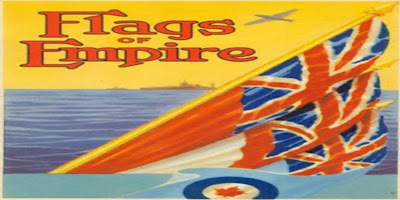





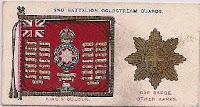


















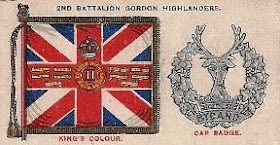






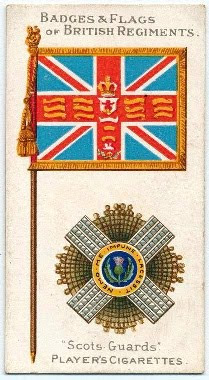






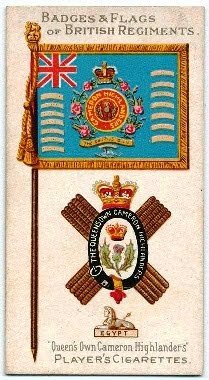

















































.jpg)
3.jpg)














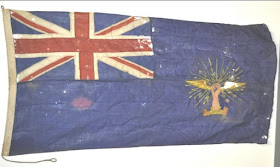




















um!~~60_57.JPG)



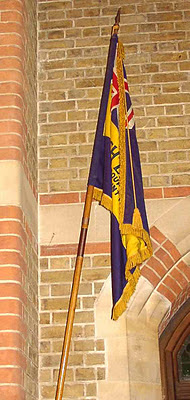

4FI,VOSVdYBSeoqQQ!hQ~~60_12.JPG)










